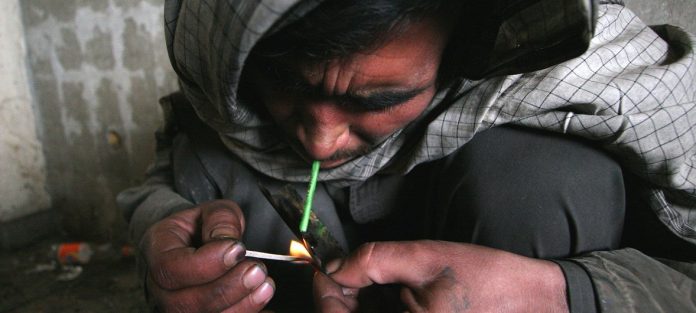Afghanistan’s opium market is facing a dramatic transformation. Since the Taliban’s de facto authorities imposed a poppy cultivation ban in 2022, opium prices have skyrocketed tenfold, according to new data from the UN Office on Drugs and Crime (UNODC).
While opium production has sharply declined, the price for a kilogram of opium surged from $75 in 2021 to $750 in 2024, creating massive profit opportunities—primarily for high-level traffickers and organized crime groups.
A Shift in the Global Drug Trade
The UNODC reports that heroin and opium seizures have dropped by about 50% since 2021, reflecting a significant fall in production following the poppy ban. However, this has not weakened the opium economy.
“Despite the production decline, trafficking remains highly profitable,” said Ghada Waly, UNODC Executive Director. “Profits are flowing to transnational crime groups, further destabilizing Afghanistan and the broader region.”
Stockpiles Sustain the Trade
At the end of 2022, Afghanistan’s opiate stockpiles were estimated at 13,200 tonnes, enough to sustain demand until 2027.
Before the drop in cultivation, these reserves were valued between $4.6 billion and $5.9 billion, representing up to 29% of Afghanistan’s economy in 2023.
While these stockpiles may have provided a temporary economic cushion for ordinary Afghans amid the country’s financial collapse, most of the opium is controlled by large traders and exporters, leaving small-scale farmers in deep financial distress.
Farmers at Risk
Only about 30% of farmers held modest opium reserves in 2022. The majority, who previously depended on poppy cultivation for their livelihoods, now face severe economic hardship.
UNODC stresses the urgent need to create sustainable economic alternatives for Afghan farmers to prevent a potential return to poppy farming, especially as the current high prices make the crop extremely tempting.
A Dangerous Shift Toward Synthetic Drugs
Another looming concern is the potential shift from opium to even more dangerous synthetic drugs.
With opium increasingly scarce and expensive, traffickers and users may turn toward synthetic opioids like fentanyl, which are far more potent and deadly than heroin.
UNODC warns that without a coordinated global counter-narcotics strategy—one that not only targets trafficking networks but also supports viable livelihoods for Afghan farmers—the world could face a new, more dangerous drug crisis.




